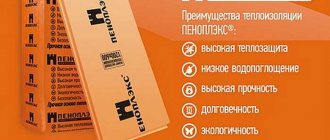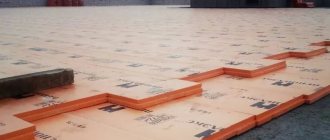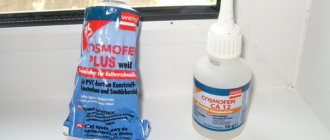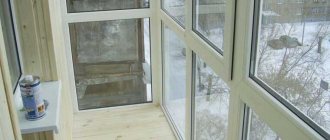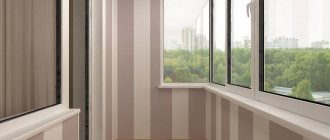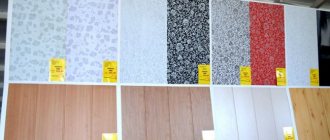Often, when choosing a product made of plastic, consumers ask the question: “What is this, polyvinyl chloride?” The harm and benefits of this material have long been studied. However, the negative aspects of PVC significantly outweigh its usefulness.
The most common plastics pose serious threats to human health and the environment. Challenges to using this material include: extreme pollution from production, toxic chemical exposure during use, fire hazards, and their contribution to the growing global solid waste crisis. But one plastic stands out: PVC, throughout its life cycle, is the most environmentally harmful of all plastics.
The functional life of PVC—its production, use, and disposal—results in the release of toxic chlorine-based chemicals. They accumulate in water, air and the food chain. The result is: serious health problems, including cancer, damage to the immune system and hormonal imbalances.
What is PVC? Description
Polyvinyl chloride, commonly known as PVC or vinyl, has become one of the most used types of plastics. We can see many products made from this material around us: packaging, home furniture, children's toys, car parts, building materials, medical supplies and hundreds of other products. Its advantages are that it is very versatile and relatively inexpensive. But the price we pay for an inexpensive and seemingly harmless item made of PVC is much higher than it might seem at first glance.
In fact, this common plastic is one of the biggest contributors to toxic emissions. PVC pollutes human bodies and the environment during production, use and disposal. Although all plastics pose serious threats to human health and the environment, few consumers realize that PVC is the single most environmentally harmful of all plastics.
Plastic windows: harm and benefit
What is a PVC window or, as many more often call it, plastic / metal-plastic? This is a window whose frame and sashes are made not of wood or aluminum, but of PVC profiles. Such windows have become widespread due to the combination of low cost, good performance and durability.
Are plastic windows harmful to health? There are many myths surrounding this issue, some of which are generated by a basic lack of information.
For example, sometimes the harm of plastic windows is seen in the fact that they “deteriorate the air” in the house. So, very often, after replacing old wooden windows with plastic ones, the microclimate in a house or apartment deteriorates: humidity rises, stuffiness occurs, etc. Plastic windows are blamed for this.
In fact, the ventilation system is responsible for the microclimate. As a rule, it does not work in old houses. While there were old wooden windows in the house, the air in the room was at least renewed through the cracks in the frames. What are PVC windows? These are sealed plastic structures that completely exclude such air exchange, and, as a result, when ventilation is not working, the air in the room stagnates and becomes oversaturated with moisture and carbon dioxide. In such cases, VEKA specialists recommend equipping windows with micro-ventilation devices that improve air exchange and microclimate in the room.
History of the discovery of polyvinyl chloride
PVC was discovered by accident on two occasions during the 19th century: in 1835 for the first time by Henri Victor Regnault and Eugen Baumann in 1872. In both cases, the polymer appeared as a white solid in vinyl chloride bottles after exposure to sunlight. Regnault was able to obtain vinyl chloride when he treated dichloroethane with an alcoholic solution of potassium hydroxide. Then, quite by accident, polyvinyl chloride was obtained by direct exposure of the monomer to daylight. Bauman was able to polymerize several vinyl halides and was the first to figure out how to make polyvinyl chloride. True, it came out in the form of a plastic product.
At the beginning of the 20th century, chemists Ivan Ostromyslensky and Fritz Klatte tried to test the use of polyvinyl chloride for commercial purposes, but their efforts were unsuccessful due to difficulties in converting the polymer. Ostromyslensky in 1912 managed to achieve conditions for the polymerization of vinyl chloride and develop convenient methods on a laboratory scale. Klatte discovered in 1918 the processes by which polyvinyl chloride is produced by the gaseous reaction of hydrogen chloride and acetylene in the presence of catalysts.
Chlorine in PVC
PVC plants are the largest and fastest-growing users of chlorine, accounting for nearly 40% of all the substance used worldwide. Hundreds of chlorine-based toxins accumulate in the air, water and food. Many of these chemicals, called organochlorines, are resistant to breakdown and will remain in the environment for decades. Scientific research shows that these chemicals are linked to serious and widespread health problems, including infertility, immune system damage, impaired child development and many other harmful effects.
Due to the chemical structure of organochlorines, humans and animals cannot effectively eliminate them from their bodies. Instead, many of these compounds accumulate in fatty tissue, resulting in pollution levels thousands or millions of times greater than those found in the environment. Each of us has a measurable amount of chlorinated toxins in our bodies. Some organochlorines can affect a person's life before birth, during the most delicate stages of development.
We analyze in detail the myths about the dangers of PVC with the help of an expert
The first information attacks on polyvinyl chloride began in the 1990s, when it became clear that this material could replace many traditional construction and industrial materials. Under pressure from stakeholders and with the involvement of giants such as Greenpeace, a powerful campaign was waged to force PVC out of the global industry. However, the plan failed, and all accusations of PVC have long been refuted, but nevertheless, since then, dozens of articles and reports have been circulating on the Internet that PVC allegedly harms human health and the environment.
This myth is especially often abused by manufacturers and sellers of WPC products based on polyethylene (PE) and polypropylene (PP). If you ask a company that sells WPC based on PE or PP why their products are better, with a 90% probability they will answer: “Because PVC is harmful to health, it releases chlorine in the sun,” or something like that . Since a wood-polymer composite based on PE and PP cannot boast of such high strength and durability indicators as a composite based on PVC, these manufacturers consider the “harmfulness” of polyvinyl chloride to be their competitive advantage.
We, as a manufacturer of WPC products based specifically on PVC, could not stand aside and turned for comments on this matter to the editor-in-chief of the magazine “Plastic Masses” and a leading specialist in the field of polymer pipes both in Russia and abroad, Doctor of Technical Sciences, Professor Vladislav Vitalievich Kovriga. Here's how he commented on the situation:
“Recently, attacks on various types of PVC materials under the banner of environmental protection have become more frequent, because they effectively compete with other materials, mainly polyethylene and polypropylene. I will give a number of main theses on the basis of which this polymer is attacked.
Myth 1: Is PVC toxic because it contains chlorine?
The fact that polyvinyl chloride contains chlorine is a great advantage of this polymer material. It is known that most polymers use non-renewable oil and gas sources as raw materials, which are depleted in the future. Polyvinyl chloride is a material whose production can be based on renewable sources of plant origin (43%), which make it possible to obtain its hydrocarbon part and on the decomposition products of salt chlorides (57%). Polyvinyl chloride is not toxic, as has been practically shown in the production of pipes, linoleum, window profiles, and PVC-based WPC products. The production processes of some PVC products, such as flooring, have been certified to ISO 14001, which takes into account the environment at all stages of production of these products (reduction of waste, reduction of emissions to air, water, etc.) .
Myth 2. PVC is banned in many countries, isn't this evidence of its toxicity?
Currently, there are no legislative documents that would prohibit the use of polyvinyl chloride, with one exception. This is an EU decision that it is not permissible to manufacture PVC products for children under 3 years of age if there is a risk that children could suck on these products. In April 2004, the European Commission funded a comparative study of all published life cycle analyzes concerning PVC product applications and their alternatives. The findings confirm that PVC is a material like others. Depending on the cases, it may be equal, better or slightly inferior to alternative products, but this will never lead to a ban on PVC or demands for its replacement.
Myth 3. The use of lead and cadmium compounds in the formulations of some PVC products?
Indeed, lead and cadmium salts are used as stabilizers in some polyvinyl chloride products. And although the research work carried out did not reveal the toxic effect of the concentration of these substances used in the stabilization of PVC, European PVC manufacturers in 2000 signed a voluntary commitment (“Vinyl-2010”) aimed at reducing the environmental impact of PVC products throughout their entire life cycle. life cycle, including, since 2001, excluding all sales of cadmium stabilizers and committing to completely replace lead stabilizers by 2015 (We would like to add that only CaZn-based stabilizers are used in the production of our products).
Myth 4: Burning PVC is toxic because it releases chlorine?
The fire resistance of polyvinyl chloride is one of its most important advantages. Polyvinyl chloride is a non-flammable product, which determines its attractiveness when used in construction. According to French law, PVC products belong to class Ml (low-flammability), i.e. the best category for non-flammable products. PVC only decomposes in the open flame of other combustible materials. In this case, it is not chlorine that is released, but hydrogen chloride.
Myth 5: Is polyvinyl chloride a non-recyclable material?
This is not true. As part of the “Vinyl 2010” program, a polyvinyl chloride recycling system has been developed, adapted for various types of waste, including automotive waste, textile waste, etc. A special technique for recycling cable or fabric coverings has been developed, which is called Vinylup or Texilup. Particular attention was paid to the processing of rigid polyvinyl chloride used in construction. According to the developed scheme, in 2006, 8,500 tons of rigid PVC waste were recycled in Europe. In this regard, special programs have been developed for the collection of polyvinyl chloride waste at the European level. These programs affect large teams. Thus, the voluntary commitments of the European PVC industry cover more than 20,000 enterprises and 530,000 employees.
There is a lot of talk these days about product life cycle analysis. What can be said about polyvinyl chloride in this regard?
A life cycle analysis (LCA) for PVC carried out by the European Commission in 2004 concluded that “PVC is a material like others, which may be better, equal or slightly inferior depending on the application and the evaluation criteria chosen.” . For example, in the conclusions regarding PVC windows, a comparative study commissioned by the European Commission on life cycle analyzes of PVC products and other materials used for the same purposes states: “For windows being one of the main applications of PVC , the resulting studies note that there is no one “winner” when it comes to choosing a preferred material, since most studies say that no one material (wood, aluminum, PVC) has a complete advantage for standard environmental impact categories " Currently, all application areas are developing their own system. Thus, the collection of PVC flooring waste reached 100 tons in 2006. PVC incineration should disappear as the entire recycling system becomes fully operational. Incineration currently complies with national (Regulation of 20 September 2002) and European legislation, so burning PVC does not produce toxic fumes and there is no impact on the environment. Since PVC is inert and does not decompose, it can be sent to waste and storage facilities, where the tightness (reliability) of storage is ensured (plasticized PVC sheets).
Myth 6. Large amounts of vinyl chloride monomer are released into the atmosphere during PVC production?
The European Council of Monomer Producers, representing the majority of European producers, has issued two Statutes for enterprises of this type of production:
- Charter of the industry for the production of vinyl chloride monomer and PVC (suspension process), in 1994;
- Charter of the industry for the production of emulsion PVC, in 1998
Among other obligations, these statutes set strict limits on monomer emissions from monomer and PVC manufacturing facilities, as well as on the maximum amount of monomer residue present in PVC.
The Intergovernmental Commissions in Oslo and Paris for the Protection of the North Sea later issued two Decisions on monomer emissions and on suspension PVC plants and a Recommendation on air emissions from emulsion PVC plants. Certain limits on monomer emissions into the atmosphere almost completely correspond to the limits defined in the regulations. In 1999, companies that signed the 1994 Charter were audited by an independent consultant (Det Norsk Veritas - DNV). Another audit was carried out at the end of 2002. The compliance audit for the production of emulsion PVC was completed in 2004.
As a result of the efforts of industrial enterprises, the total annual volume of monomer emissions into the atmosphere by all enterprises that signed the company charters decreased from 7694 tons in 1989 to 1062 tons in 1999. This is less than 200 g per 1 ton of PVC produced. Recent environmental monitoring of the PVC industry has shown that monomer emissions associated with the production of suspension PVC (the most common type of PVC) are now approximately 75 g per tonne of PVC produced.
Myth 7. Is it true that PVC manufacturers only fulfill the minimum legal requirements?
The goals of PVC manufacturers are more ambitious. PVC manufacturers have voluntarily united to ensure the sustainable development of their industry. They developed a comprehensive approach to ensure the responsible management of their products, from production to disposal, which was set out in the “PVC Manufacturers Voluntary Commitment” signed in March 2000. This commitment is now known as “Vinyl 2010”. This voluntary commitment is based on the principles of the chemical industry's Responsible Care® program and applies to key points throughout the life cycle of PVC and PVC products. It contains specific goals with milestones to enable industry to track its progress towards achieving the final program goals. Interim reports on the implementation of the European PVC industry's voluntary commitment indicate that progress towards the program's environmental and resource efficiency goals is ahead of schedule. This is achieved by using a “learning by doing” approach, strengthening partnerships within the supply chain. The PVC industry produces very concrete results.
Myth 8. Why use PVC in building construction if it releases toxins, including dioxins, during a fire?
PVC is most widely used in the construction of buildings; it is used, for example, in pipes for supplying drinking water and drainage, in the manufacture of window frames, flooring and roofing, wall cladding, cable insulation, etc. Like all other organic materials used in building construction (plastics, wood, fabrics, etc.), PVC products will burn if caught in a fire. However, PVC products have self-extinguishing properties, i.e. if the influence of the external flame stops, then the burning of the PVC product will stop. Due to their high chlorine content, PVC products have very good fire resistance properties, meaning they are difficult to ignite, generate fairly little heat and tend to char rather than produce burning plastic droplets. But if there is a severe fire in the building, then PVC products will also burn and emit toxic substances, like all other organic substances. The most important toxic substance emitted during combustion is carbon monoxide (CO), which is responsible for 90-95% of fire deaths. CO is an invisible killer because it has no odor, and most people in a fire die from it in their sleep. And, of course, CO is released when all organic substances burn, be it wood, fabric or plastics. PVC, like some other materials, releases organic and inorganic acids. These secretions have an odor and are irritating, causing people to run away from the fire. One particular acid, hydrogen chloride, is released when PVC and some other products burn. To our knowledge, there is no scientific evidence to support that anyone's death in a fire was due to HC1 poisoning. Several years ago, when discussing any major fire, dioxins played an important role, their role was carefully studied and their quantities were carefully measured. Today we know that dioxins released from fires do not affect people because fire victims have been carefully studied in several projects, and the dioxin levels detected have never been higher than background levels. This very important fact was recognized in official reports. At the same time, we know that during a fire many other volatile carcinogenic substances are released, such as polycyclic aromatic hydrocarbons and microparticles, which pose a much greater danger than dioxins. Thus, there are very serious reasons to continue to use PVC products in the construction of buildings, since they have good technical properties, good environmental and very good economic properties, and no more than other materials increase the toxic effects of smoke in a fire.
And lastly, how do we see the future?
The voluntary commitment demonstrates the fact that PVC is a reliable material and contributes to the future of this material. Combining good price-performance ratio with good properties, PVC will continue to be the material of choice for specifiers and end customers. Improvements in manufacturing processes and waste management support these superior characteristics of this product. The production of PVC and PVC products plays an important role in improving people's quality of life and conserving natural resources in a world with growing populations and ever-increasing demands for water, food, homes, sanitation, energy, health care and economic security.
The SAVEWOOD company expresses gratitude for the comments to the editor-in-chief of the magazine “Plastic Masses”, Doctor of Technical Sciences, Professor Vladislav Vitalievich Kovriga.
Dioxin: an integral element in the production of polyvinyl chloride
Dioxin and dioxin-like compounds are also harmful to health. These substances are unintentionally created when producing, using, or burning chlorine-based chemicals. Large quantities of dioxin are produced during various stages of PVC production, and the abundance of products made from this material in medical waste and garbage is one of the reasons why incinerators are considered the largest sources of dioxins. Thousands of accidental fires in buildings constructed using polyvinyl chloride release dioxin into ash and soot, polluting the environment.
Dioxin is known as one of the most toxic chemicals ever produced. In their ongoing research into the substance, environmental scientists suggest that there is no safe level of exposure to dioxin. Thus, any dose, no matter how low, can cause serious health damage. Scientists have also concluded that the levels of dioxin currently found in most adults and children are already high enough to pose a serious threat to global health.
Additional components of polyvinyl chloride
Since PVC on its own is virtually useless, it must be combined with a number of additives to impart the desired characteristics to PVC in the final product. These additives include toxic plasticizers (such as phthalates), stabilizers containing hazardous heavy metals (such as lead), fungicides and other toxic substances. Since these additives are not chemically bound to PVC, the product itself may be permanently hazardous to the consumer. Additives may leach out, combine with other materials, or become airborne. There are as many examples of potential effects on humans as there are PVC products themselves. The smell of new car interiors is a familiar example of what experts call chemical fumes from PVC products.
Increasing scientific evidence suggests that many of these chemicals found in polyvinyl chloride disrupt the hormonal system, leading to birth defects, infertility, reproductive problems and developmental difficulties. There is growing evidence that the same trends are occurring in people around the world, including lower sperm counts, increases in certain cancers, deformities of the reproductive organs, mental health problems such as attention deficit disorder and a weakened immune system.
PVC panels are harmful to health
Appearing in the late 90s, ceiling tiles quickly gained popularity. With its help, you can transform a room without significant costs.
It captivates with its low cost, wealth of choice and speed of installation, which can be done on your own. However, there is an opinion that it also has a negative side - unsafe for the human body.
Let's figure out if this is really so.
A popular finishing material is made from expanded polystyrene, a synthetic polymer obtained by foaming polystyrene. The manufacturing process for piece goods may vary.
The quality of the product and its performance properties depend on it:
- Cheap tiles are produced by stamping from polystyrene foam blocks. The resulting products have a porous surface and easily absorb dirt that cannot be washed off. The only way to restore the lost appearance is to cover it with water-based paint. Another drawback is fragility. The stamped product is easy to break and it is problematic to make an even cut due to its crumbling nature.
- Extruded samples are made from polystyrene strip coated with film. They have no grain, the smooth surface repels dust and water, and is easy to clean. Painting is not possible, but it is not necessary, since the wide range of colors allows you to choose the desired option.
- The production of injection tiles is based on sintering polystyrene foam. The drawing is clear and deep. Thanks to the geometrically correct shapes, it is easy to join the edges, achieving a visual absence of seams. These products are relatively moisture resistant and stronger. The price is more than 3 times more expensive than stamped ones. There is no choice of color; they are produced only in white.
To understand whether ceiling tiles are harmful, it is worth taking a closer look at what they are made of. Expanded polystyrene was invented for the needs of the military industry, thanks to polymerization.
It was used as a heat and sound insulator. Little thought was given to the dangers of what was invented.
Subsequently, the economical material became widespread in the construction and packaging industries. It should be remembered that the polymerization process is reversible.
Polymers are susceptible to decomposition when exposed to sunlight, in an oxygen environment, or when exposed to heat and light.
As a result, toxic styrene is released. This monomer causes irritation of the mucous membranes of the nasopharynx, severe headaches, and disruption of the nervous system. It has a negative effect on hematopoiesis and leads to leukemia.
Destroys the liver, leading to toxic hepatitis. Possessing an embryogenic effect, with systematic contact it causes disturbances in the intrauterine development of the fetus.
Another dangerous property of styrene is its ability to accumulate in the body, so even small doses pose a threat. In addition to the above, when oxidized by oxygen, which is part of the air, formaldehyde is released, which is included in the list of carcinogens. At
Nowadays, plastic panels are a fairly well-known material that is used for “dry” finishing of premises.
The reason for this popularity is its appearance, easy installation, simplicity, resistance to temperature changes and corrosion. A huge selection of different PVC panels and the endless imagination of designers create panels that are distinguished by their originality and style.
You have the opportunity to choose any panels that will create a cozy atmosphere in any room. Plastic panels are perfect for finishing ceilings and walls in an office, apartment, country house or any other room. You do not need adhesive or cement mortars, there is no need to pre-prepare the surface and wait until it dries.
You just need to secure the sheathing strips, and you can begin installation work, which will make you play with the construction set. The use of PVC panels will insure you from dust, dirt, multiple waste and other parts that accompany traditional repairs. Consequently, at low financial costs, you get perfectly smooth surfaces that hide any unevenness and communications.
So have you decided to renovate? Have you chosen PVC panels?
And then the question arose before you - “Is it harmful”? Let's figure out together whether plastic panels are harmful to human health. In the production of PVC panels, PVC, glue, varnishes, paints and lacquer films are used.
PVC itself - the basis of the panel - is absolutely harmless. Polyvinyl chloride (PVC) is one of the most famous thermoplastic plastics, which is made from petroleum or natural gas and table salt. By electrolysis, chlorine gas is released from salt, and by cracking, ethylene gas is obtained from gas or oil.
Next, after chemical reactions, we obtain polyvinyl chloride - a white powder that is harmless to human health.
Only some low-quality cheap paints, varnishes, and glues that are used in some inexpensive panel options can be harmful. And their harm often only appears when the panels are heated. If you prefer such options, then there is indeed a risk of being exposed to hazardous substances that may be contained in their composition.
When purchasing you must be provided. This fact is also confirmed
Home » Golden Hands » How environmentally friendly are plastic panels?
There is an opinion that PVC plastic panels emit the poisonous substance dioxin.
It is known that dioxins are substances that are highly toxic; they are also characterized by carcinogenic and mutagenic effects on the body, however, the release of this substance from plastic occurs only when it is heated and burned, which contradicts the scope of application of PVC plastic panels, as well as safety precautions. Are plastic panels harmful to health?
Therefore, buy only those school items that have a description of the composition, or wean your children from a bad habit. Unfortunately, I must note that on most items there is no PVC marking, so it is visually extremely difficult to determine its composition. Do not rush to throw away things; it is not necessary that all the items that I wrote to you.
in your home, consist precisely of Info PVC, and not analog, safe substitutes.
When heated, PVC releases dangerous toxic substances into the air. Not even at the melting point, but with simple heating.
The same thoughts arise for those who install plastic windows. Unfortunately this is a big problem.
Nowadays, you can’t find a carpenter anywhere who will help you create eco-friendly housing in a city apartment.
Gradually, the metropolis will turn into a continuous one. Nowadays, plastic panels are a fairly well-known material that is used for “dry” finishing of premises.
The reason for this popularity is its appearance, easy installation, simplicity, resistance to temperature changes and corrosion.
A huge selection of different PVC panels and the endless imagination of designers create amazing interiors that are distinguished by originality and style.
You have the opportunity to choose panels of any color and texture that will create a cozy atmosphere in any room. Plastic panels are perfect for finishing ceilings and walls in an office, apartment, country house or any other room. You do not need adhesive or cement mortars, there is no need to pre-prepare the surface and wait until it dries.
You just need to secure the sheathing strips, and you can begin installation work, which will make you play with the construction set.
The use of PVC panels will insure you from dust, dirt, multiple waste and other parts that accompany traditional repairs.
Consequently, at low financial costs, you get perfectly smooth surfaces that hide any unevenness and communications.
In the modern world, every thing or any material has its own specific influence.
Now many people are using such a construction discovery as suspended PVC ceilings.
Therefore, a completely reasonable question arises: is a PVC stretch ceiling harmful? But in order not to get lost in doubt: to install it or not, you need to properly understand this serious issue.
So, first of all, you need to know that there are three types of coating:
- satin;
- glossy;
- matte.
The main feature of all three varieties is their appearance. It is unlikely that, having assessed the type and cost, one can make a verdict: it is useful or harmful. In order to make such a serious statement, you need to understand the very structure of the material from which it was made.
First, let's look at those that contain polyvinyl chloride. This chemical composition is widely used in everyday life, as it has fairly strong resistance to various acids. Polyvinyl chloride itself is not harmful to the human body, but can the same be said about the chemicals that make up polyvinyl chloride?
Polyvinyl chloride contains toluene and phenol, so many believe that PVC ceilings can be harmful. But in the manufacture of canvases, these substances are used in such proportions that have a non-detrimental effect on the human body. There is an opinion that they are harmful due to their not very pleasant smell.
This conclusion is very easily refuted. After all, the smell from the tension covering appears only at high temperatures, and the temperature used during installation is about 70⁰C.
After installation, about two to three hours should pass for the smell of the heated material to disappear, and after that the odor problem will no longer bother the consumer.
You need to order coating installations only from legal entrepreneurs who have all the certificates and permits to sell a specific material or product.
Note: Installing a PVC stretch ceiling is harmful only if the canvases were made from counterfeit materials. Once exposed to such products, you can immediately feel disturbances in the body, namely:
- Fatigue.
- Manifestation of allergic symptoms.
- Toxic poisoning.
- Excessive sleepiness.
Hazardous Exposure
Harm to health when using polyvinyl chloride is caused by toxic additives included in its composition. They easily leach and evaporate from PVC products. For example:
- Lead in PVC pipes can migrate to the surface of the product, where it is easily carried by water and then enters the human body.
- Phthalates are added to make PVC soft and flexible. Products such as shower curtains and children's toys release gas when heated, which can be easily inhaled.
- Fire retardants are added to PVC products to resist fire. Building materials can be heated in the sun, after which the products release hydrogen chloride, which is poisonous to the human body.
Ceiling made of plastic panels: pros, benefits, cladding process
It's up to your taste; the main thing is not to confuse them with wall panels. The modern market offers many varieties of ceiling panels. All that remains is to choose exactly what is suitable for your interior. The difference is in weight. Plastic wall panels are heavier and stiffer.
Ceiling ones are much lighter, which simplifies the work. Their fragility necessitates careful handling: a dent can be left even by hand, not with a tool. More about the advantages of plastic panels The finishing material is strong, durable, plastic, has good sound insulation, is moisture resistant, does not fade in the sun, and is easy to clean. Oddly enough, thanks to special additives, it is environmentally friendly, resistant to high temperatures, does not burn and does not emit unpleasant odors.
Therefore, you can replace the usual electrical wiring with circuits that allow you to install halogen LEDs. The modern market offers many varieties of ceiling panels. All that remains is to choose exactly what is suitable for your interior. The difference is in weight. Plastic wall panels are heavier and stiffer.
Ceiling ones are much lighter, which simplifies the work.
Toxic production
The main chemical element of PVC is chlorine, and the production of chlorine releases dioxins into the environment.
- Some scientists argue that there is no safe level of exposure to dioxins for humans.
- They are persistent and bioaccumulative. Most human exposure occurs through foods such as meat, dairy products, fish and shellfish, as these substances are concentrated in the fatty tissue of animals.
- In addition to dioxin, chlorine production also results in mercury emissions and asbestos waste.
- Communities adjacent to PVC factories are particularly susceptible to toxic chemical pollution from plastic production.
Impact of PVC on children
Children are not little adults. Their developing brains and bodies, their metabolism and behavior make babies uniquely vulnerable to toxic chemicals like those released during the life cycle of polyvinyl chloride:
- Harm to a child's health occurs in the womb through exposure to toxic chemicals. Children ingest chemicals through breast milk, baby formula, and environmental contact.
- The rapid development of the brain in fetuses, infants and young children makes them more susceptible to the harmful effects of chemicals that can impair brain function and development.
- For their weight, children eat, drink and breathe more than adults - so they absorb more toxic pollutants.
- Toddlers put things in their mouths and spend a lot of time on the floor and ground, which leads to regular contact with chemicals from toys, containers, dirt and dust.
PVC: what kind of material is it?
The structure of PVC is an almost amorphous polymer. The electronegative chlorine in the polymer chain causes high intermolecular cohesion forces. This is reflected in the physical and chemical properties of PVC - high strength, chemical resistance, non-flammability (PVC does not support combustion).
Polyvinyl chloride is a universal polymer. Depending on the production method and formulation, it produces a wide range of plastics: hard, soft, transparent and opaque, operating in the temperature range from -80 to +90–110 °C.
PVC as a material can be synthesized using different methods. The raw material for the synthesis is 57% chlorine, which is available on Earth in almost unlimited quantities in table salt, and 43% petroleum products.
Recycling problems
Recycling PVC is not a solution to the environmental problems that arise during its production and use. While most plastics are quite recyclable, PVC is the worst example - it is the least recyclable of all plastics. This is because products made from it contain so many additives that recycling them would be impractical and expensive. The following numbers speak for themselves. According to statistics, less than 1.5% of the total PVC production after consumption of products has been recycled recently.
Many PVC additives, including phthalates and heavy metals such as lead, slowly leach from PVC over time when exposed to the environment (such as a landfill), eventually contaminating ground and surface waters.
Are plastic panels harmful?
// In the modern approach to repair, an important role is played by the safety of the materials used. In the case of ceilings, the situation is exactly the same - you need to choose the safest and most environmentally friendly design method.
This article will help you determine which ceiling is safer for health and in which rooms which materials are preferable to use. Of course, this is one of the most economical and simple options for designing floors. However, how harmless is it? According to many experts who have conducted special studies, polystyrene will not be the best choice.
Styrene, which can be released by polystyrene when heated, is a rather harmful substance.
There is even a special GOST 15588-86, which regulates the use of polystyrene in construction, recommending its use only in the middle layers of the structure. It is also worth remembering the possible toxicity of the adhesive used for installing tiles. Basically, these are harmless compounds, but it is still worth reading the label on the bottle before purchasing.
With all that said, if you want to install truly safe ceilings, polystyrene tiles may not be the best choice. This type of design is very popular. easy to process and doesn't cost a lot of money.
As for the harm caused to humans, things are much better here than with polystyrene tiles. The gypsum from which the sheets themselves are made is a neutral substance. It can only harm a person if ingested.
This means that it is necessary to use masks or respirators when sawing sheets - the dust that appears during this process can get into the lungs and cause harm.
Otherwise, gypsum plasterboard structures will be a good choice if you are not concerned about their installation time and the need for additional finishing in the form of putty and painting. The most popular method of designing floors lately.
At the same time, it is the most controversial.
On the one hand, many are convinced that the ceilings used to install such ceilings are unsafe; on the other hand, there is an opinion that everything is exactly the opposite. A lot of special research has been carried out confirming the environmental friendliness of all materials and the absence of harmful effects on the body.
However, the health hazards that PVC ceilings allegedly have remain widely known. To be convinced of the opposite, it is worth reading the environmental certificates that are issued for each type of such fabric.
In some cases, suspended ceilings are even recommended for installation in medical and educational institutions as safe for health. All structures of this type will be suspended, and it is very important which ones are used to assemble the external decorative surface.
You can determine whether the selected suspended ceilings are harmful to health by the material from which the decorative coating is made. PVC, which is the basis for most of these types of coatings, can release harmful substances.
The plastic ceiling is practically free of drawbacks, thanks to which it has become a favorite among far-sighted and practical apartment owners. Among the many types of ceiling coverings, there is a very popular one - a plastic ceiling. Ceiling panels are made of polyvinyl chloride. A plastic ceiling is a type of suspended ceiling.
It is easy to install and relatively affordable. You can handle the installation yourself; the design is very simple. The main thing is to make the correct calculations for purchasing materials.
In addition, this type of finishing does not burden the structure; the plastic ceiling is light and very beautiful, it can be decorated in various ways. Material content: There are various types of plastic for the ceiling on sale. A large assortment allows you to choose the necessary option to realize your design idea. There are different types of plastic panels; for finishing the ceiling, they use ceiling panels that are neither thin nor fragile, their thickness does not exceed 5 mm.
This allows you to make the ceiling light. There are also wall panels, they are stronger than ceiling panels, their thickness is 6 - 10 mm. It is not recommended to replace ceiling panels with wall panels.
Due to their unique technical characteristics, PVC sandwich panels are used both in construction and in residential interior design. Plastic panels can be divided into subtypes:
- Seamless - this type of panels after installation has a smooth surface with invisible seams, ideal for ceilings;
- Embossed - after installation it looks like wooden lining;
- Rectangular - in the form of a rectangle;
- Panels with rustication are a type of panels that have a special recess at the ends;
- Plates - panels have the shape of a square;
There is another type of plastic - sandwich panel. These panels are universal, they can be used not only for ceilings and walls; very often they are used to finish slopes on windows and create partitions from them. Sheets of sandwich panels are the largest among all types of panels, they are 3 meters long and 1.5 meters wide .
The panels vary in appearance and are matte, glossy and colored. Plastic ceilings also have a wide range of colors. Panels can be used either in a single color tone or in a combination of different colors and shades.
Color options are not limited to monochromatic models; there are very interesting colors: marble, imitating wood, with a variety of patterns. Thanks to a well-chosen color scheme, the interior design will be excellent. The plastic ceiling in the interior looks very original and emphasizes the design.
Glossy panels reflect light well and make the room visually more spacious.
It has a lot of options and can be made at different levels. Plastic parts on the ceiling can be combined according to the method of their placement, for example - diagonal with transverse or longitudinal laying of panels on a multi-level ceiling, which will give the interior a special look.
/ / / - a favorite material for finishing ceilings not only in the bathrooms of ordinary city apartments, but also for decorating ceilings in dachas and other country buildings. Often, a plastic ceiling is installed in a country house for reasons of economy, but it also has other advantages, which we will discuss later.
This circumstance must be taken into account, since the height of the room in which such a covering will be installed will decrease slightly.
The second feature of the solution follows from the first - the presence of a ceiling space between the plane of the assembled composition and the main ceiling. This design feature can and should be used. In the gap between the panels and the ceiling, ventilation system air ducts, various technical communications and wiring are installed.
In addition, it will be possible to install recessed lamps at any point on the plane.
The ceiling itself is quite light, which will reduce the load on the load-bearing floor beams. At the same time, plastic panels are very easily cut with an ordinary stationery knife or sawed with a hacksaw.
The covering parts are fastened to the base using self-tapping screws and a screwdriver, which speeds up and simplifies the assembly process. The small set of necessary tools and the overall ease of installation of such structures allows even a novice craftsman or a person who has no experience in assembling such ceilings to cope with the installation of such a covering.
At the same time, all work can be done alone, without assistants. The advantages of the solution include the ability to choose the appearance of the panels.
They are available in a wide range of different sizes and colors. This will allow you to choose the type of coating that is most suitable for a particular room. There are both simple white color options at a low price, and more expensive ones that imitate natural materials like marble or wood.
The latter option is especially suitable for suburban buildings. One of the most important advantages of this finishing option over others will be affordability.
All components for plastic ceilings are inexpensive, including the panels themselves.
This will allow you to reduce the costs of decoration and repairs, which is very important if the decoration is carried out in a country house or in a house intended only for occasional visits and not permanent residence. At the same time, nothing will be done to the ceiling during your absence.
The panels are resistant to negative temperatures and humidity.
Mold and mildew do not develop on them, and caring for the coating only involves periodic cleaning of dirt with a damp cloth or sponge.
Plastic ceilings have not only advantages, but, unfortunately, also disadvantages. There are much fewer of them than there are advantages, but it’s better to know about them all in advance.
Until relatively recently, we had no idea what we could do with the ceiling other than whitewash it. Well, paint it with water-based emulsion. If you want something “fun”, you can cover it with wallpaper.
With the entry into our lives of new, interesting building materials, the number of good and different ways of finishing the ceiling has increased. The arsenal of design solutions includes suspended ceilings, suspended ceilings, ceilings, glass, mirrored, stained glass, plasterboard, covered with wooden panels...Ceiling cladding with polyvinyl chloride panels good value for money.
It doesn’t irritate the eye and visually increases the volume of the room. Which, given the usually low ceilings in an apartment in a multi-storey building, is not at all out of place. An important advantage of this type of finishing is that, despite the seeming complexity of the work, an inexperienced amateur builder is quite capable of coping with the installation of a plastic ceiling with his own hands.
So you can save on inviting professional finishers. Don’t confuse ceiling panels with wall panels! Building materials stores offer a very wide selection of PVC panels. They are of different lengths and widths, they come in varnish, glossy, matte, wood or marble. It's up to your taste; the main thing is not to confuse them with wall ones.
Use of PVC in construction
One of the purposes of polyvinyl chloride is its use in construction. The largest overall use of PVC in this industry doubled between 1995 and 2010. With so much PVC used in construction and household items, accidental fires in buildings are becoming increasingly dangerous for first responders and residents. Although PVC building materials are often fire resistant, they can release toxic hydrogen chloride gas when heated. These corrosive gases can spread faster than flames, reaching people in the room before they can escape. Hydrogen chloride is lethal if inhaled.
It's not uncommon for people stranded in a building fire to die from toxic PVC fumes before the flames actually reach them, fire experts say. A striking example is the fire that occurred in 2009 at the Lame Horse club in Perm.
As builders and policymakers become increasingly aware of the dangers and potential costs associated with PVC fires, further restrictions are being placed on the use of the hazardous material in building construction.
Properties of PVC
PVC (PVC) or polyvinyl chloride (PVC) A universal thermoplastic synthetic polymer, a very common plastic.
PVC ranks second after polyethylene in terms of consumption among synthetic polymers. PVC is a chemical compound of carbon, hydrogen and chlorine, which consists of approximately 43% ethylene (a byproduct of petroleum refining) and 57% combined chlorine, obtained from table, rock and salt. Polyvinyl chloride is a powder obtained by suspension polymerization of vinyl chloride. PVC is available in the form of powders, granules and plastisols. The melting point of PVC is 165-170 °C, however, when heated above 135 °C, destruction processes begin in it, accompanied by the elimination of atomic chlorine with the subsequent formation of hydrogen chloride, causing intense destruction of macrochains. At the same time, the high chlorine content makes PVC self-extinguishing.
The decomposition of the polymer is accompanied by a change in its color from ivory to cherry brown. To prevent this phenomenon, a complex of stabilizers is introduced into PVC, of which the best known are lead compounds (oxides, phosphides, carbonates), salts of fatty acids, melamine, and urea derivatives.
PVC production ranks second in the table of the most popular materials
Of the numerous plasticizers of polyvinyl chloride, the most widely used are esters of phthalic and phosphoric acids (dibutyl phthalate, dioctyl phthalate, etc.), as well as esters of adipic, sebacic and other fatty acids.
With the introduction of a plasticizer, the frost resistance of the polymer also increases. The following requirements apply to plasticizers:
- Purity
- Colorlessness
- No smell
- No irritating effect on the skin and mucous membranes
- High boiling point (above 200°C)
Plasticizers that increase the frost resistance of the polymer must have a low freezing point.
Depending on the degree of plasticization, PVC is produced in the form of vinyl plastic and plastic compound.
Properties of vinyl plastic
Viniplast Rigid, practically unplasticized PVC containing stabilizers and lubricating additives.
With the correct selection of stabilizer complexes, the destruction temperature rises to 180 - 220 ° C, which allows its processing from the melt. Viniplast has high physical properties, which makes it a structural material widely used in mechanical engineering and construction (pipes, moldings, fittings, double-glazed windows, etc.).
Viniplast has good light resistance, is welded and glued. The non-toxicity of PVC up to 80 °C allows its use in the food industry and medicine.
PVC plastic compound
Plastic compound is PVC containing up to 50% plasticizer (phthalates, sebacates, tricresyl phosphate and others), which greatly facilitates its processing into products and expands the range of practical use (films, hoses, artificial leather, linoleum, oilcloths, etc.).
Harm
Safe substitutes for PVC
The rapid growth of the vinyl industry comes against the backdrop of clear evidence of serious health risks from polyvinyl chloride, its production and use. Industrial employees, their families and communities are in immediate danger. There is compelling evidence that it is now possible and important to make a rapid transition to safer materials.
The good news is that this industrial transition can be achieved in a way that is fair for everyone involved—plastics producers, industrial workers, and consumers. PVC can be replaced with safer materials in almost all cases. They can be traditional materials such as clay, glass, ceramics and wood. In cases where traditional materials cannot be used as a substitute, even chlorine-free plastics are preferable to PVC. As consumers increasingly demand PVC-free products, and as the environmental and health hazards of PVC are recognized, practical alternatives will become more economically viable.
Refusal of PVC products
Many companies and even states have introduced restrictions on the use of polyvinyl chloride and a policy of material substitution.
- Large companies such as Proctor and Gamble have abandoned PVC packaging.
- BMW, Herliltz, IKEA, Opel, Sony-Europe and Volkswagen have announced PVC-free policies.
- Major construction projects such as the Eurotunnel between England and continental Europe have been completed without the use of PVC.
- Due to increased market demand, hundreds of European communities have introduced restrictions on the use of PVC in public buildings.
- The Swedish Parliament voted to phase out soft PVC and hard PVC with additives that are already considered harmful.
Thus, it has long been known that PVC causes irreparable harm to health. Polyvinyl chloride is considered dangerous today. In cases where this is possible, it is better to replace it with analogues to avoid problems in the future.
